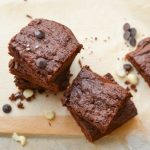Carbs and Performance
One of the lingering myths when it comes to human nutrition and athletic performance is that the body has an absolute dependency on carbohydrates and glucose. And this leads many to really indulge where they think: “I’ve exercised. Now, I need to drink a lot of sugary drinks and I need to eat a lot of pasta and breads.” And that is a wonderful way to get fat. But they think this, because they’ve been told this idea that the body has to be consuming carbohydrates to perform well. There’s a little bit of truth there. The muscles, the exercising muscle will gladly use glucose and every cell in the body will use glucose as a fuel, happily. That doesn’t mean that glucose is necessarily the primary fuel for that activity. In fact, far from it, when someone is sedentary, they’re sitting around like we are now, fat is providing most of that energy to fuel our modest metabolic rate at the moment. And glucose is relatively a modest, a minor part of this as we get up and start walking and then running.
And then as the intensity goes up, fat starts to provide less and less of that energy and glucose starts to provide more. That’s the typical way it goes. However, as someone has been managing their macronutrients in a way to keep their insulin down, they’re training their bodies to burn fat better. And if they’re doing so in the context of exercise, what they’ve done is allow their fat to continue to be the primary fuel, even as the intensity of the activity is going up. That is fat adaptation. And this is why you have guys who are nowadays breaking records with 100 mile runs and they’re doing so kind of following the pillars. We’ve outlined, controlling carbohydrates, prioritizing protein and filling with fat, and they do. And they’ve also basically removed their dependency on glucose as their primary fuel, which matters because we always will run out of glucose.
If that’s the fuel that, that your metabolism is based on, you’ll run out of glucose. This is the kind of person who eats a starchy sugary breakfast, their glucose levels spike, their insulin levels match it, pushing the glucose down to even lower than it was before. This is where they were at first, it climbs up, it goes down and then it will come back up. But that little period of time when they’re in the negative, so to speak, that will be sensed as a crushing, almost anxiety inducing, hunger they’ll feel. And this will be only two or three hours after they ate those two bowls of starchy sugary cereal.
They’ll feel like they need to eat something again, because they sense that moment of lower glucose levels. And because that’s what they’re stuck using, they feel like they have to put more into the system. But when you’ve shifted your dependency, your primary metabolic fuel on the fat, you’re not subject to the highs and lows of glucose. You have that steady supply of fat, which can fuel you much, much longer, 10 times longer than glucose can in the human body.
This article is for informational and educational purposes only. It is not, nor is it intended to be substitute for professional medical advice, diagnosis, or treatment and should never be relied upon for specific medical advice.



















